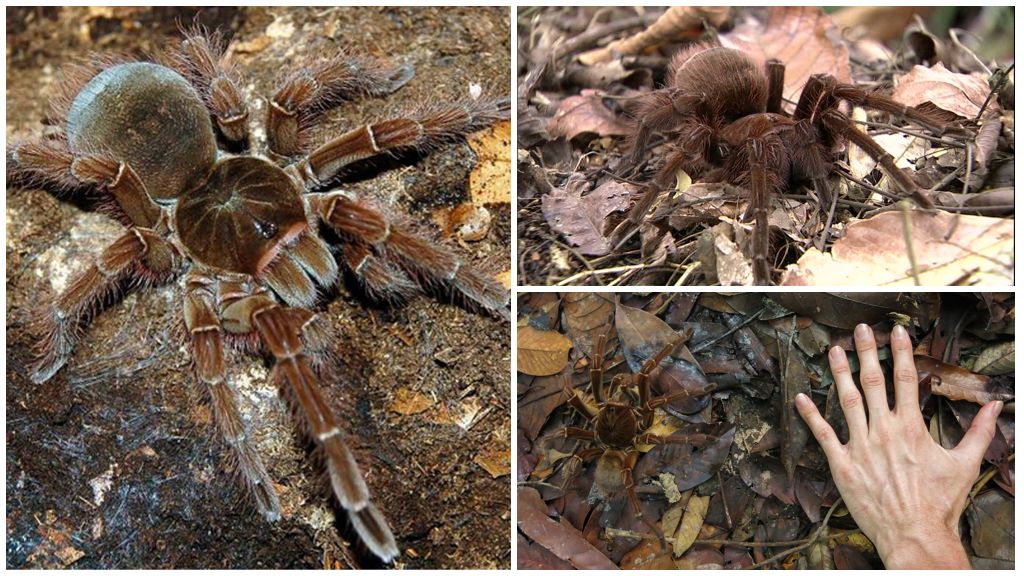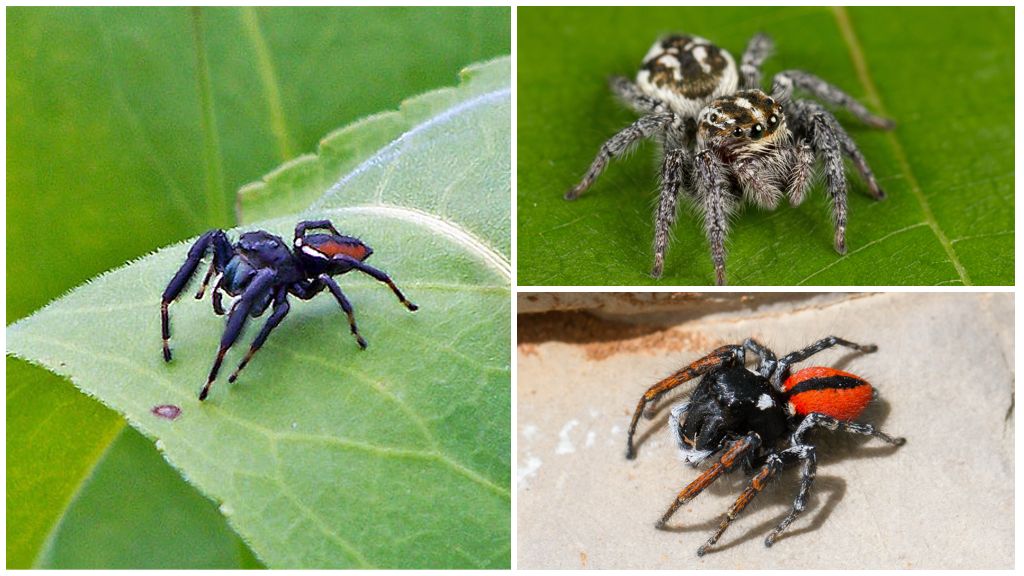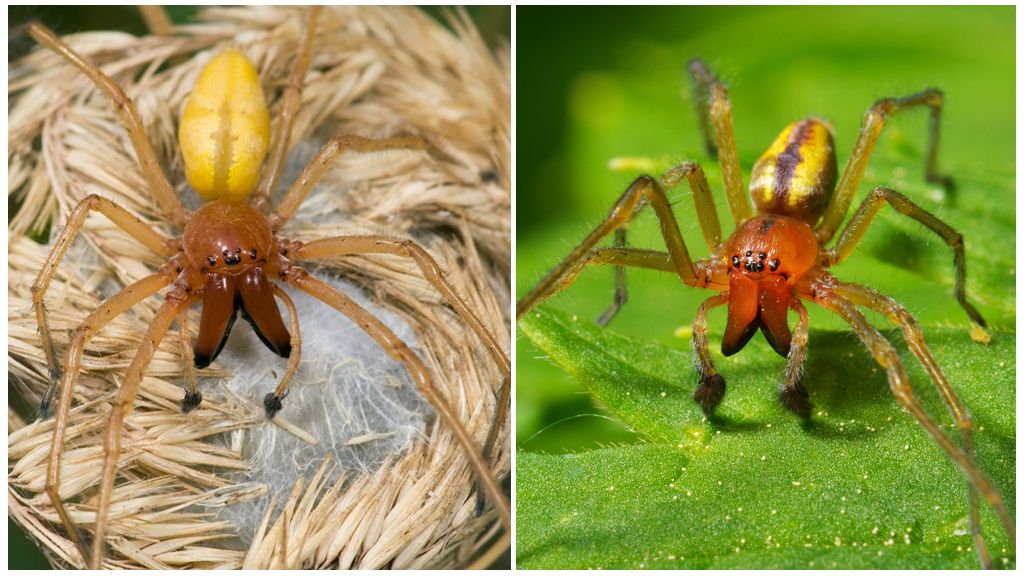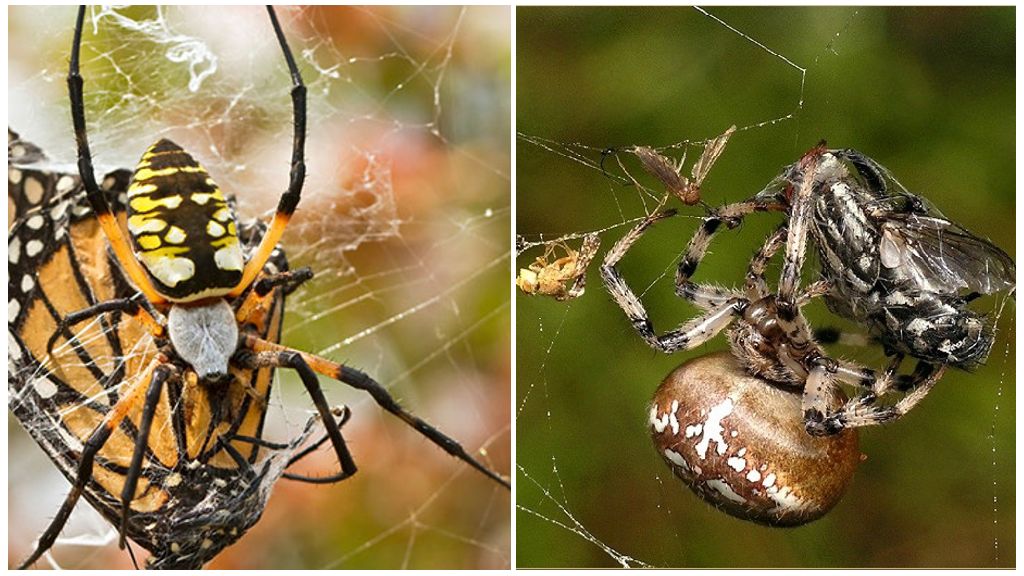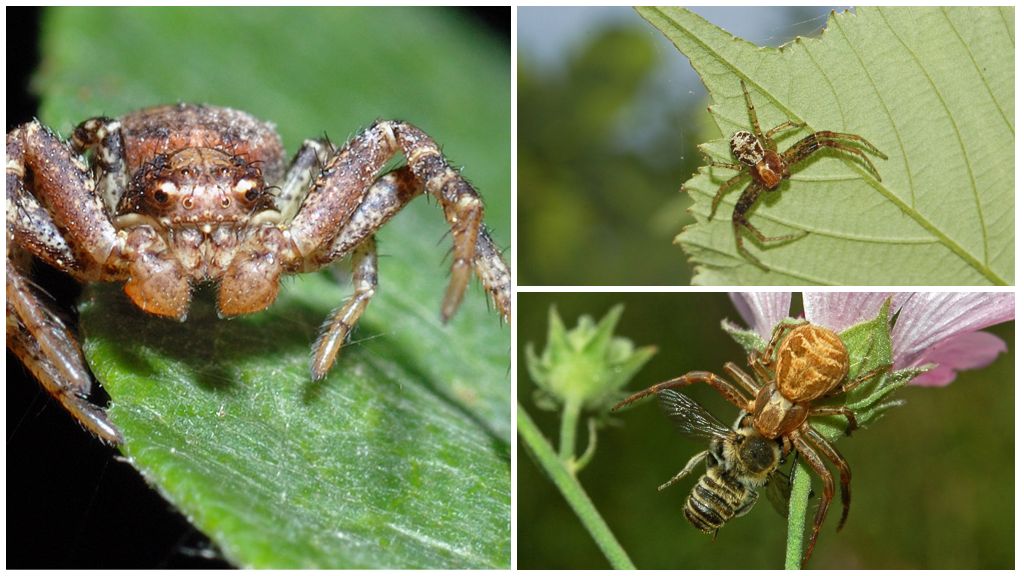
The spider is a side-walker, it is an isometric foot side-walker, a crab (Latin Thomisidae) has one feature - to walk sideways. Hence the name came from. Outwardly resembles a crab, thanks to modified forelimbs. The animal spends most of its life in flowers, waiting for the victim.
Description of appearance
There are 170 genera and more than 2,000 species of sidewalks around the world. From the rest species of spiders differ in forelimbs. Two pairs of forelegs are much longer than the rest, turned upside down. Remind crab claws. Due to this feature, the spider can walk sideways in different directions.
Females reach a size of 1.2 cm, males are half smaller. The color is very different - green, pink, yellow, white, red, brown. Most vibrant species live in flower buds, merging to match the petals. Crab of brown color, dark dwells in the bark of trees, forest litter. A photo of the side walker spider is located below.
Behavior features
The crab spider does not weave hunting nets, does not build a web in front of the shelter. Uses cobwebs only to move to lower leaves, long distances. The female forms cocoon sacs into which she lays eggs.
Interesting!
The isosome side walkers use the web as a vehicle, which gives the impression that spiders fly. They weave bags, sit on top, fall down, hang out in the air, wait for a gust of wind. In the fall, in this way, females move several kilometers from their past habitat. To stop, the spider drops a cobweb, clings to tree leaves, a plant.
The crab spider spends most of his life yellow, green, red, pink on flowers, calmly waiting for the victim. At the sight of a butterfly, a fly, a caterpillar it takes a stand with its forelimbs spread wide. It stands motionless, waiting for the right moment. Instantly rushes to the victim, bites, injects poisonous substance. After a few minutes, he starts the meal.
Breeding
The mating season begins in June. Males look after females, mating occurs. The spider weaves a cocoon from the web, attaches to the back of the leaf, lays eggs. In one clutch there may be several hundred. Before the offspring is born, the side-walker protects the larvae, and for some time after the birth of the cubs it protects them from enemies, obtains food. The life expectancy of an adult is not more than a year.
Danger to humans
Sidewalk spider venom is extremely toxic, but only to potential victims. Small rodents can feel painful sensations - mice, hamsters, guinea pigs. For humans, the dose of a toxic substance is extremely small. Crabs do not attack humans, they try to hide themselves quickly, so as not to suffer. Even if the sting of a spider of the side of the walk follows, it will be invisible.
